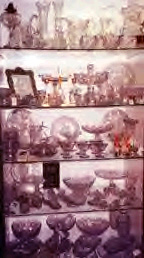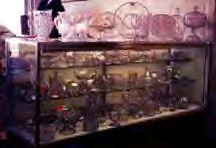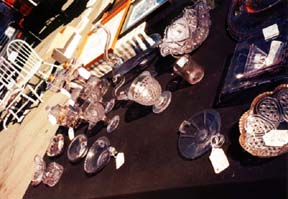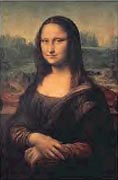An Unnatural Disaster
| There is a dilemma in the world of Early American Pattern Glass that needs addressing. It is the widespread practice, in the southwestern United States, of exposing EAPG to a germicidal black light for a few weeks or directly to the sun for an extended period of time thus turning the glass artificially purple. The merchandising MO is to buy old glass, do the exposure thing, take the pieces that turn a pukey light purple (some flint won't turn), hike up the price, write a little purple flyer with a charming story about how the sun, over the past hundred years has reacted with a chemical, "magnesium" (sic), in the glass and created this glorious purple antique. |  |
 |
This is not a small problem. We have seen booths
in California, Arizona and New Mexico with hundreds of
pieces of EAPG ruined for eternity in the name of, well, greed. The process
is irreversible. Call us supersensitive perhaps, because
our business is EAPG pattern-matching and no one wants a set of dishes
with a purple spooner, but the sight of a shop full of this stuff turns
my stomach! My analogy for the rest of the antiques world is that
this practice is tantamount to taking an original Pennsylvania Dutch
painted chest, stripping it down, repainting it red, white & blue striped
and calling it patriotic. To be fair, some dealers who have a few purple pieces are genuinely surprised when we reject their pieces and tell them they are ruined, but I have spoken with a number of people who own shelves-full of this glass- none of whom admit to having been the one to "do the deed", and their response is always defiantly, "It sells." They say (ignorant) visitor's from "up north" are enchanted with the idea of the age of the glass and its being affected by our fabulous southwestern sun. |
This, in the face of out and out
admissions
that a germicidal UV lamp was actually used & the sun had nothing to do with
it! |
 |
 Even at Flea Markets it is FEATURED in some booths- |
Obviously we EAPG dealers have done a poor job of
selling the
original charm of our merchandise & that also needs to be remedied. Meanwhile, with full understanding that all sellers are free to do whatever they want, to whatever they own, we beg, beseech & implore members of the professional Antiques community to join with us in denouncing this practice, rejecting any pieces that have been ultraviolentedly tampered with and doing whatever is possible to educate the buying public that EAPG is beautiful, useful and charming just as it was created two centuries ago. |
| Jerry
Greenblatt has well put the dastardly practice in perspective: "People who change the color of glass objects must have had no regard for them, since they are no longer what they were. Making them purple is like painting them gold or adding attractive cracks. That old article uses glass chemistry to justify altering color, as if clear glass is like photographic film that must be developed to see what was within. Think of what might emerge by irradiating colored glass! Think of the abstract images that might emerge by using a blowtorch on the Mona Lisa!" |
 "Oh NO!!!" |
 |